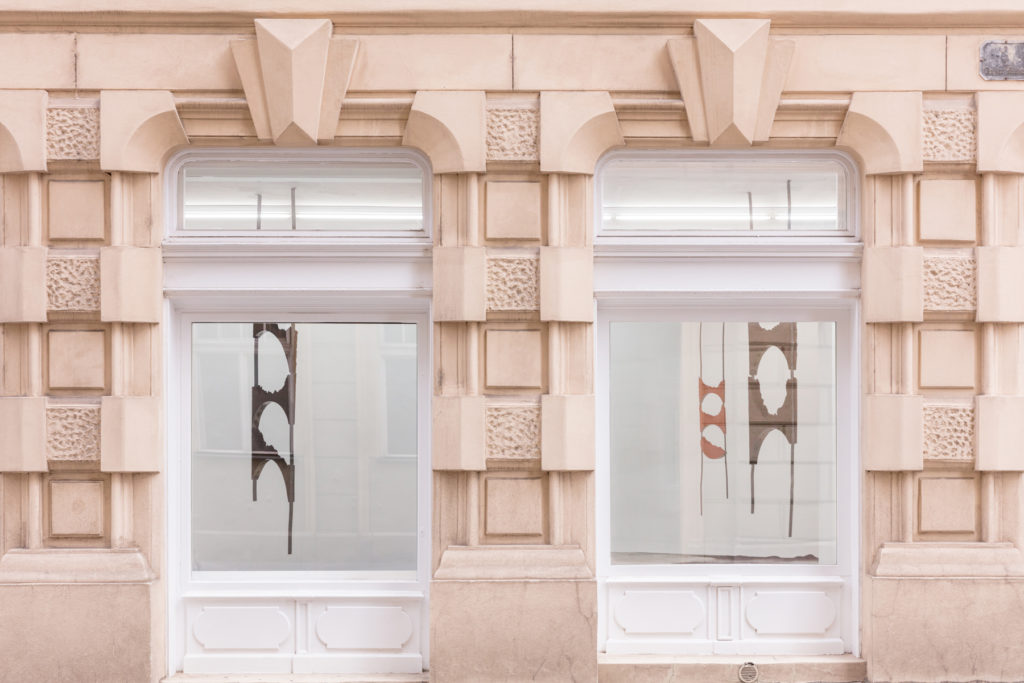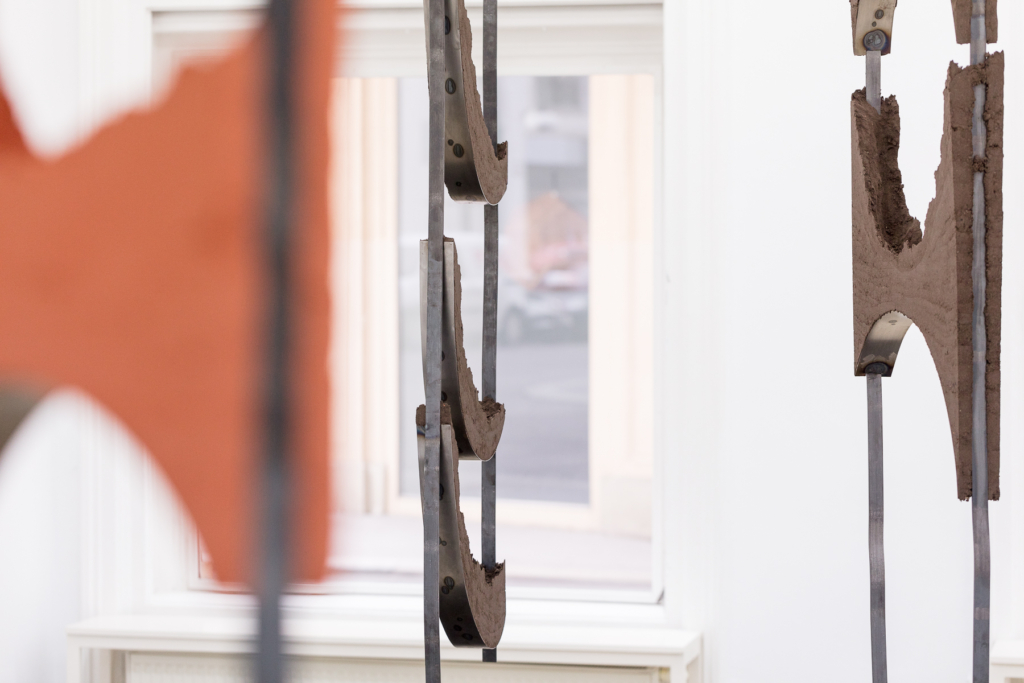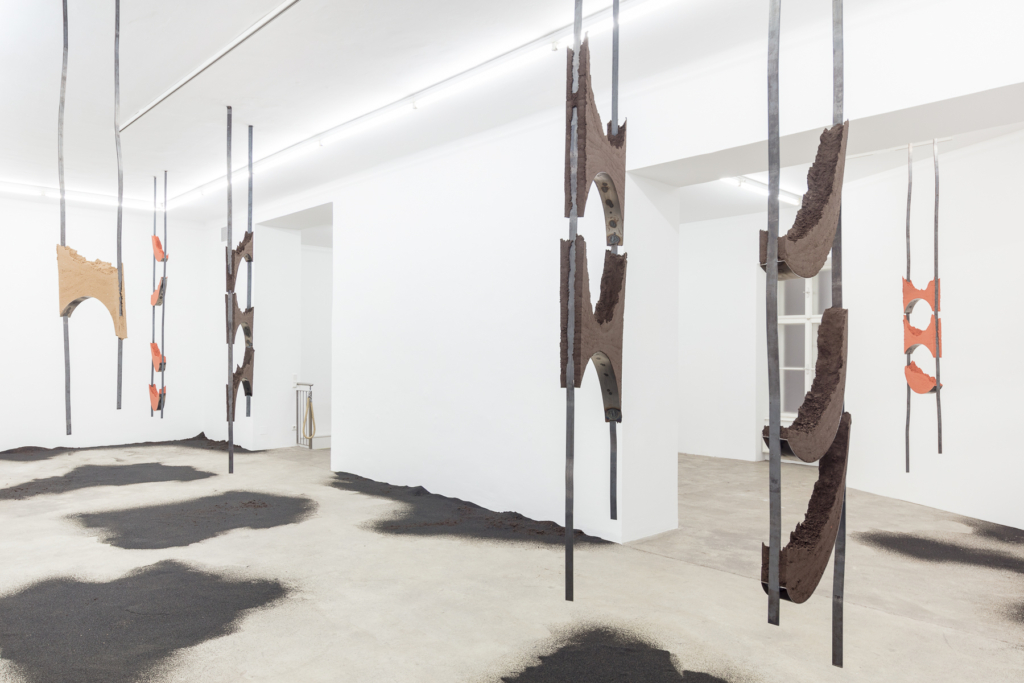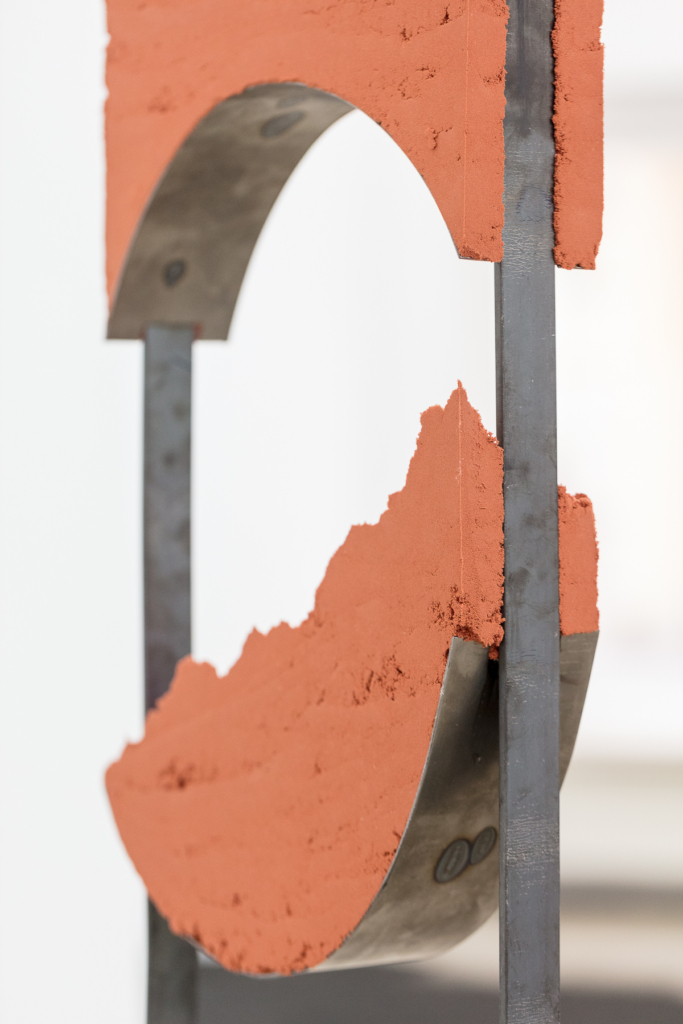Writing about my friend Angelika Loderer’s work, I began digging for one photo that immediately came to mind, one that would anchor my story in a context critical to each of our creative processes, though particularly to hers. It was from 2006 and showed us, along with our professor, linking arms and grinning proudly after our first successful bronze pour in college. Behind us, light poured through the bay door from the edge of campus, though we were illuminated by a dim flash. In our leather jackets, gloves, and chaps, we matched the earthen sand pit and dull bronze ingots before us. Except for our smiling expressions, every surface of the foundry was shaded by mineral earth. When I look at Angelika’s work now, I can taste that same foundry. The same materials are present, the lessons enabling one’s sense oft he all-encompassing, carefully swept studio, revealing unvarnished potential. Yet her minimalism isn’t merely a product of the studio, for it is made out of the studio, carved elegantly from the monument itself. Displayed cleanly and lit brightly, her work intercedes between the spaces of the studio and the gallery. In Earthwork fashion, her work crumbles, drifts, soaks up, and vanishes. At its most transient, it turns the gallery into a time capsule. At its most resolute, it is as stubborn as a balled up fist. Though calling it art for artists would miss the point. Unlike the kind of art that strikes terror, sending artists racing back to their studios, warning others on the way, making them come alive, Angelika’s work is indifferent. But then again, so is nature.
Loderer’s work for Quiet Fonts at Sophie Tappeiner is logical in its development as well as radical, expanding the term sculpture. As she examines the antithetical nature of casting sand versus metal, in examining temporary versus precious materials, and found versus made forms, her practical inquiry borders on the philosophical and conceptual revelations of Minimalism and Land Art. Her inversion of metal casting reflects the negative, collapsing the space around an object or memory. For the sculptor, it stands for the studio, a clear workspace, and good materials.
I never found the photo, but I remember where I saw it last: pinned to the professor’s office door, next to the small watercolour calendars he always paints, of mountain scenes in Stehekin, Washington.
Layet Johnson
PRESS











